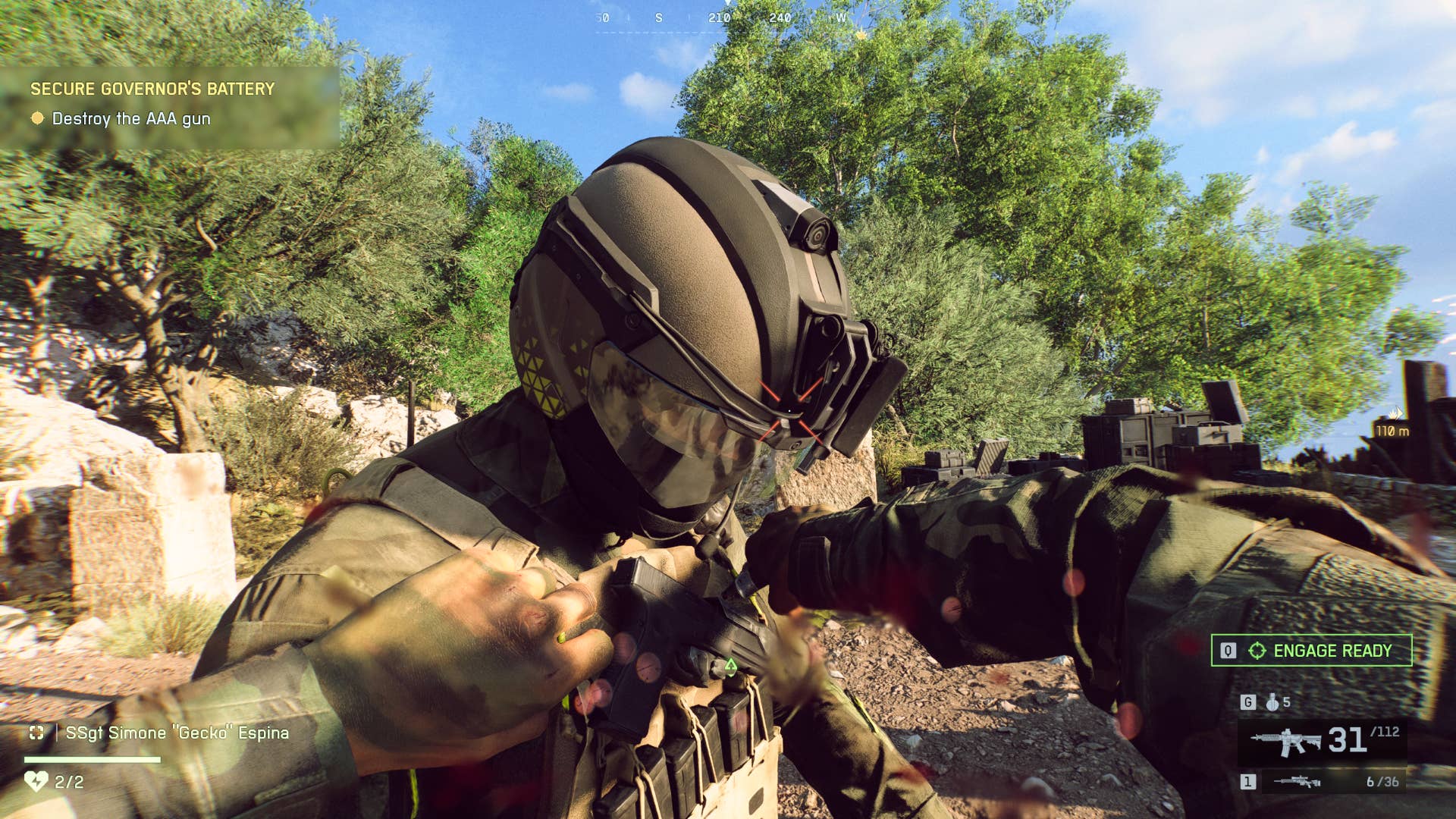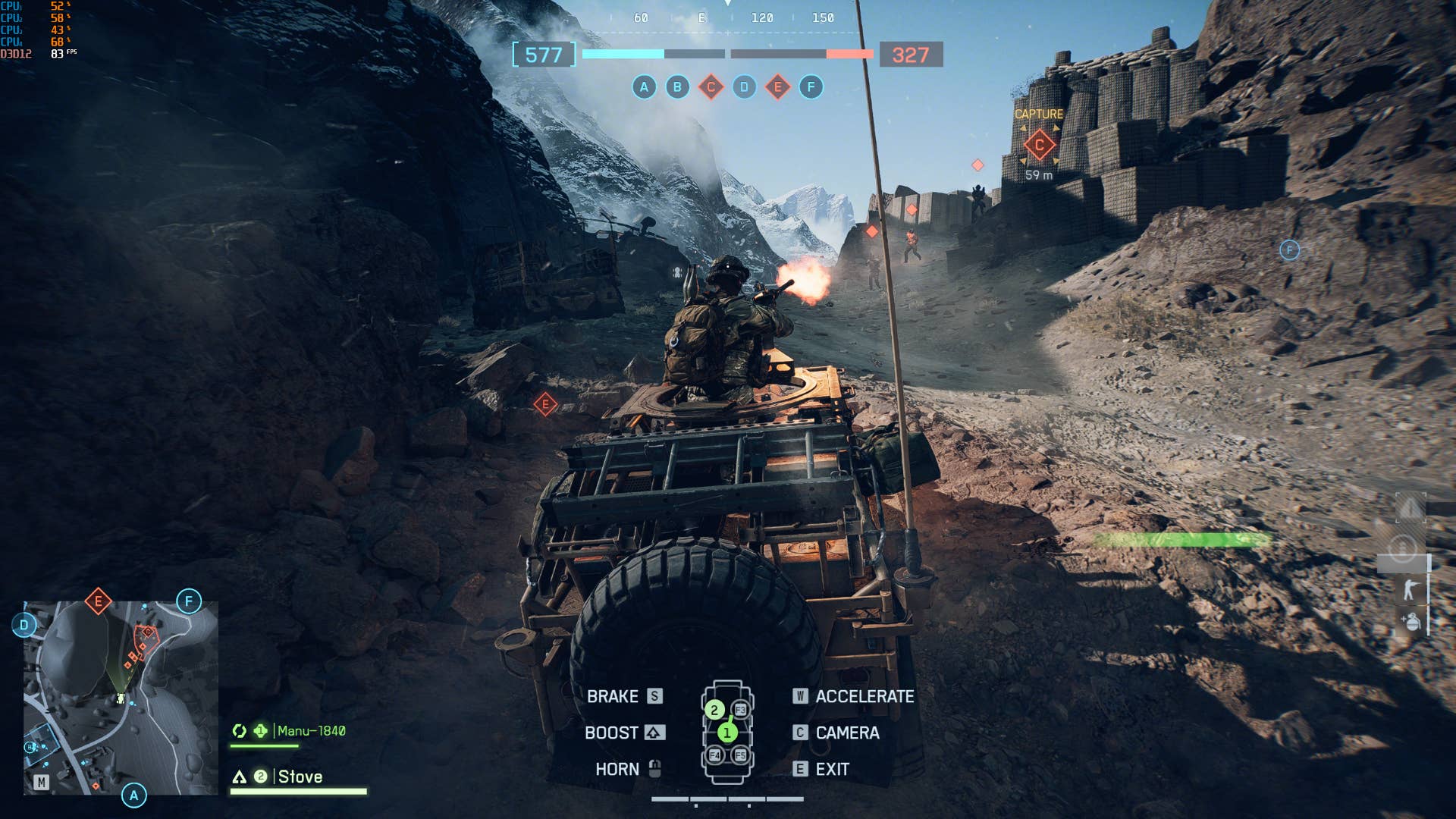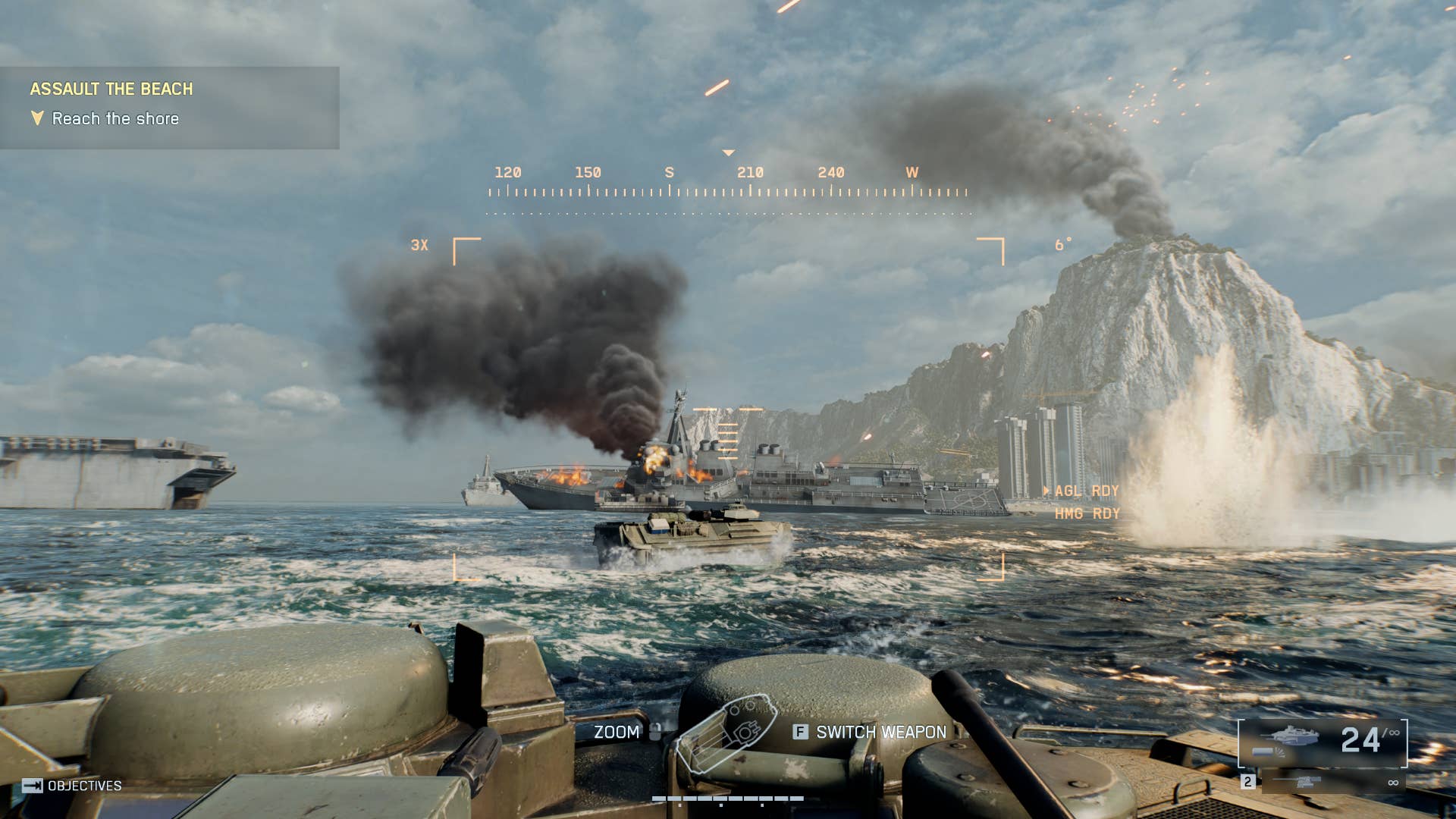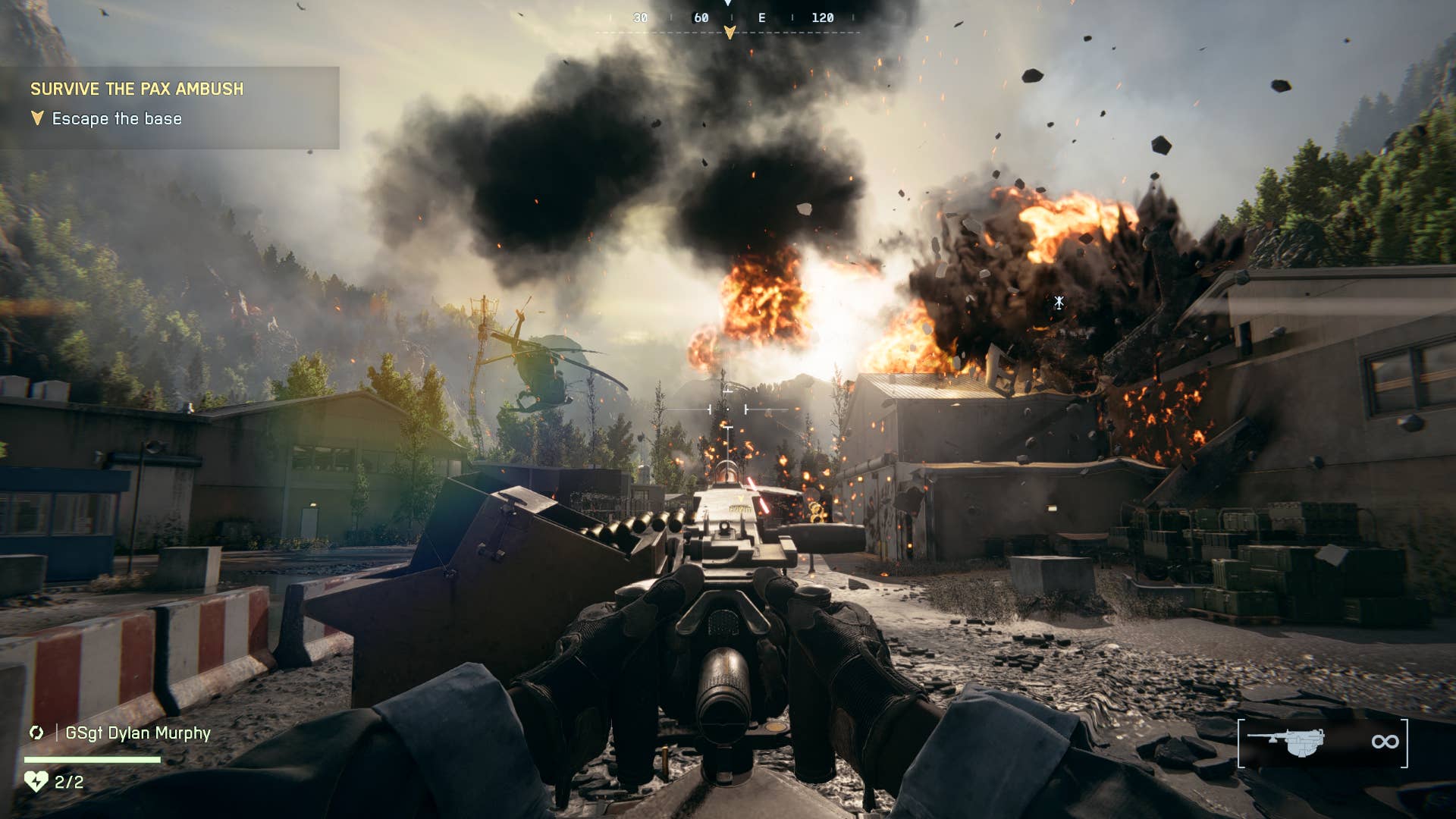Battlefield 6 this is the first time in all the years of my hardware work that I was called to someone's house to make a computer game work. I can't offer this Jim'll Fix It service to everyone, not least because IGN's lawyers have problems with the title, so I'll just say this: Enabling Secure Boot and TPM 2.0 This is inconvenient, but not as difficult as it seems, and it can be done with a maximum of a couple of switches in the “Security” section of the BIOS/UEFI.
As it turns out, this is perhaps the worst of BF6's hardware problems. I don't know who forgot to tell DICE that all FPS blockbusters should now be callously GPU intensive, but in both campaign and multiplayer it seems to work quite well… well? It's likely that as long as you're using any reasonably modern setup, you won't have to tinker with the visual settings much.
Still. Let's try anyway.
Battlefield 6 system requirements and PC performance
For a game that ultimately runs pretty smoothly, BF6 exhibits some oddities in its PC requirements. Of course, there are TPM and Secure Boot requirements, which I suspect adds to the need for next-gen processors than the game might otherwise require. It's also rare to see two different install sizes between the minimum and recommended specs – EA says this is due to the fact that the highest resolution textures are loaded additionally. I was not offered this option when downloading via Steam, deluxe textures were included by default, but then it could be added to planned day one patch.
Minimum PC specs for Battlefield 6
- OS: Windows 10
- CPU: Intel Core i5-8400/AMD Ryzen 5 2600
- RAM: 16 GB RAM
- GPU: Nvidia GeForce RTX 2060 / AMD Radeon RX 5600 XT 6 GB / Intel Arc A380
- DirectX: Version 12
- Storage: 55 GB free space
- Additional notes: TPM 2.0 enabled, UEFI Secure Booth enabled, HVCI support, VBS support
Recommended PC Specs for Battlefield 6
- OS: Windows 11
- CPU: Intel Core i7-10700/AMD Ryzen 7 3700X
- RAM: 16 GB RAM
- GPU: Nvidia RTX 3060 Ti / AMD Radeon RX 6700 XT / Intel Arc B580
- DirectX: Version 12
- Storage: 80 GB free space
- Additional notes: TPM 2.0 enabled, UEFI Secure Booth enabled, HVCI support, VBS support
Luckily there's nothing here too much crazy, since the recommended GPUs in particular include older mid-range cards and newer budget models. Having found a good point of comparison – the explosive and destructive sequence of armored attacks at the beginning of the campaign – I tried the Overkill setting on Arc B580which at native 1080p resolution averaged a comfortable 68 frames per second. While the Intel GPU had the advantage when paired with the Ryzen 7 9800X3D RPS Test Rig well over spec, it's certainly a good result for a cheap card running at max settings without upping the quality.
Even low-power ones PTX 5050 performed well, averaging 62fps (also in Overkill) with TAA at native resolution, and enabling DLSS upscaling in quality mode increased that to 79fps. BF6 DLSS 4 support also made it possible to enable 4x multi-frame generation (MFG) at 185 frames per second, and although most of them weren't real frames, everything looked smooth and clean in motion. Input lag – the ancient enemy of frame generation – hasn't gotten too high either, making MFG a viable option if there's a solid base of traditional frames to build on.

The many other cards available are also worth checking out. Without DLSS PTX 4060 managed to achieve a speed of 64 frames per second at 1080p/Overkill resolution, and at Ultra, which is less demanding on video memory, 73 frames per second. 8 GB version. RTX 4060 from is only slightly faster, averaging 67fps at 1080p, but with DLSS in quality mode it can still reach 63fps at 1440p. Stepping up a couple of GeForce levels, DLSS quality paved the way for RTX 4070 from to get 114 fps at 1440p – or 174 fps with 2x frame generation – and the same settings were more than repeatable at 4K, averaging 107 fps with frame generation and 73 fps without.
Battlefield 6 also scales well with the latest and greatest hardware. PTX 5080 produces 102 frames per second in 4K/Overkill resolution with a small addition of Quality DLSS. The 4x MFG increased this to 277 fps and the scope still appears sharp, although if you don't have a 240Hz or higher monitor then it makes sense to stick with 2x or 3x. Otherwise, you're just wasting resources creating shots you don't see.
I say “average” so often because there can be peaks and valleys in the frame rate depending on what's happening on screen: the same computer can play a frantic gunfight at around 80 frames per second and a silent sneak down a hallway at 100 frames per second. But in practice, these fluctuations aren't sudden enough to be particularly noticeable, and I never experienced any annoying stuttering, even when I deliberately ignored the game's low graphics memory warnings.

What the hell, Battlefield 6? You are an action game in 2025. Shouldn't you be slow and force ray tracing or something. It will work even on the basic model. Asus ROG allyalthough you need the resolution dropped to 1280×720 And FSR scaling in quality mode to reliably maintain low quality above 30fps. It's still better than Steam deckwhose incompatibility with secure boot disables it.
Regarding Battlefield historical fallibilityBF6 can't quite help itself, but they're also mostly limited to minor cosmetic missteps. For example, the rag dolls of fresh kills jerk upward and then flop back down, or machine gun turrets sometimes disappear after being destroyed instead of rolling with a collapse animation. There is little evidence, including from my playing in multiplayer, of the serious structural flaws that plagued previous Battlefields.

Guide to the Best Battlefield 6 Settings
The gap between the highest and lowest quality settings in BF6 confirms that trading brilliance for speed is entirely feasible. It sounds obvious, but that hasn't always been the case with recent big-budget shooters. The RTX 4060, a modest GPU with 8GB of memory that pushed the Overkill preset to 64fps at 1080p? It also averaged 73fps on Ultra, 84fps on High, 97fps on Medium, and 110fps on Low, so there's clearly an increase.
Given that the nicer settings work well on anything other than ancient hardware and small portable devices, I wouldn't recommend getting too excited, although the low and mid settings aren't terrible either. In fact, some changes—like switching anti-aliasing from standard TAA to DLSS or turning off the cloudy chromatic aberration effect—can make Battlefield 6 run and run at the same time. look better.
Here's what I settled on after testing the performance impact of each individual graphics setting:
- Texture quality: Ultra
- Terrain quality: Short
- Quality of solar shade: High
- Screen space AO and GI: GTAO High
- Weapon motion blur: 0
- World motion blur: 0
- Chromatic aberration: Off
- Scaling technique: DLSS/FSR about quality
- Everything else: Overkill preset equivalent
Going from gigabyte-consuming Overkill textures to Ultra frees up a lot of used VRAM while providing a modest FPS boost, so give it a try even if you have a relatively powerful rig. Terrain quality and sun shadow quality also provide small framerate bonuses, but it's the GTAO High setting for AO and GI on screen that's really worth choosing. Besides speeding up the game, it also provided a more stable frame rate, so you'll see less of the ups and downs I mentioned earlier.
Motion blur can be turned on or off to suit your taste – it doesn't impact performance in any way – but when it's so easy to get above 60fps as it is here, it's not really useful. And chromatic aberration, in my opinion, actively detracts from the BF6's appearance, so turn it off for a sharper image.

Scaling with DLSS (or FSR, depending on your GPU) is also necessary. Not because BF6 is hopelessly slow without it (it's not), but because in their respective quality modes DLSS and FSR look sharper than TAA at native resolution. Even at 1080p, where upscaling can be the difference between an image looking good or being a blurry mess. The blur here is all TAA, so get rid of it.
Finally, I excluded frame generation from the list because it is an inherently two-way technology that should be optional. no matter what Capcom says. But with DLSS 4 in particular, Battlefield 6 at least has one of the best implementations I've ever played with. At both 2x and 4x, it remains smooth and doesn't drag the mouse down due to excessive input lag. Just make sure you can get a good base framerate without it first, as you probably will with the settings above; on the RTX 4060 they averaged 64fps up to 95fps, which turned into a responsive 143fps with 2x frame generation.








